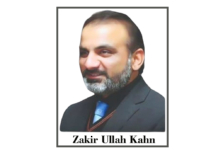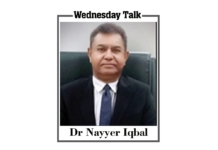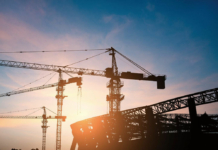The city of Lahore and its surround region is under a different kind of lockdown nowadays. I try hard to remain indoors to avoid the dust, the haze, and the pricking smell, that are all around us.
The winter of Lahore never used to be like this. For the last seven years, smog has attained the status of a fifth season, and perhaps the longest one. Whenever I go to London or some other Western cities, I feel a visible difference of horizon. In the evening, the London sky is clearer and clean, thanks to no smoggy conditions there. As soon as I land back in Lahore, the smog odour greets my nostrils.
The government has been doing a lot of things and in a decisive move to tackle the growing menace of smog, the Cabinet Committee for Anti-Smog convened a special meeting to discuss the measures under the leadership of Caretaker Chief Minister Mohsin Naqvi. The meeting, driven by the insights of environmental and health experts, resulted in crucial decisions aimed at mitigating the adverse effects of smog on public health.
Caretaker Chief Minister Mohsin Naqvi, addressing the media after the meeting, said that educational institutions across six divisions, including Lahore, would be closed on Fridays and Saturdays.
Yes, you heard it right. The government has ordered the closure of schools. Unbelievable. The government is closing schools to facilitate who? Who are more important than school-going children?
Also, markets, restaurants, and businesses are slated to open at 3 pm on these days – Friday and Saturday – with a complete closure on Sundays. These measures, though stringent, reflect the gravity of the smog situation gripping the entire nation.
The onset of winter has brought not only the familiar blanket of fog but also the more ominous shroud of smog. Smog, an amalgamation of smoke and fog, poses severe health risks such as sore throat, eye irritation, and other adverse effects. Chief among the proposed solutions is the necessity of rain to cleanse the atmosphere of smog, prompting considerations for artificial rain. However, experts underline the importance of identifying and addressing the sources of smog before embarking on such solutions.
While the Punjab government has initiated steps to combat smog, there’s a need for a more comprehensive and well-researched policy. Closing schools is a wrong step; adjusting business hours for markets are crucial steps, but their efficacy in significantly reducing smog remains a topic of debate. The focus should shift towards adopting modern technology and rigorous research to formulate a policy that ensures tangible results.
The question of where the smog originates becomes pertinent. Experts suggest that pollution from neighboring India plays a significant role. Collaborative efforts between Pakistan and India can open avenues for discussions on how to collectively combat this shared environmental challenge. Recognizing that winds carry pollutants across borders, it is crucial to engage in a regional dialogue to find holistic solutions.
India, too, grapples with smog-related issues, and there is an apparent willingness to cooperate. However, any local-level policy must incorporate state-of-the-art technology and undergo rigorous scrutiny to ensure its effectiveness. Mere policies on paper will not suffice; stringent implementation is imperative for success.
Combating smog demands a multifaceted approach. From adjusting daily routines to engaging in regional collaborations, the battle against smog necessitates a comprehensive strategy. The decisions taken by the Cabinet Committee for Anti-Smog are commendable, but they should serve as a stepping stone towards a more exhaustive policy that addresses the root causes of smog and ensures a healthier, cleaner future for all.
In the midst of the current smog predicament that engulfs Lahore, one can’t help but yearn for the days of the old Lahore – a time when the sky was clearer, cleaner, and the air purer.
The contrast between the Lahore of the past and the current cityscape prompts reflection on the environmental changes that have taken place. The air, once free from the pollutants that now contribute to the smoggy atmosphere, allowed residents to breathe deeply, enjoying the simple pleasure of clean, fresh air.







